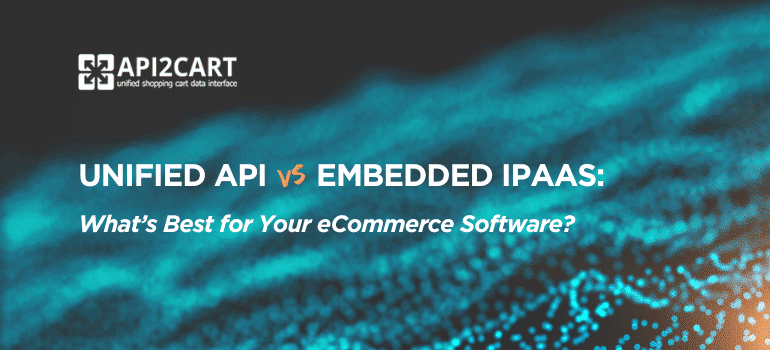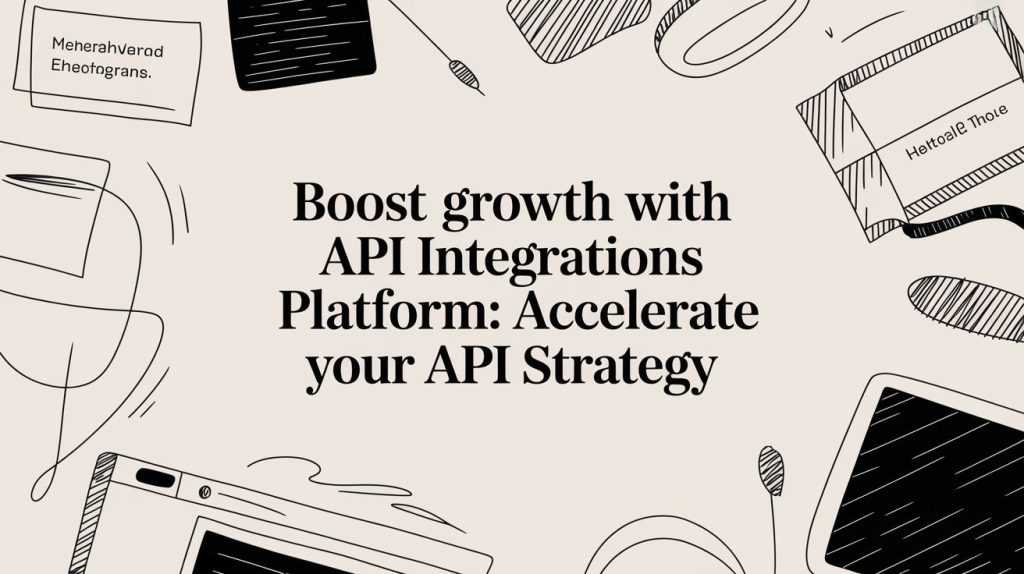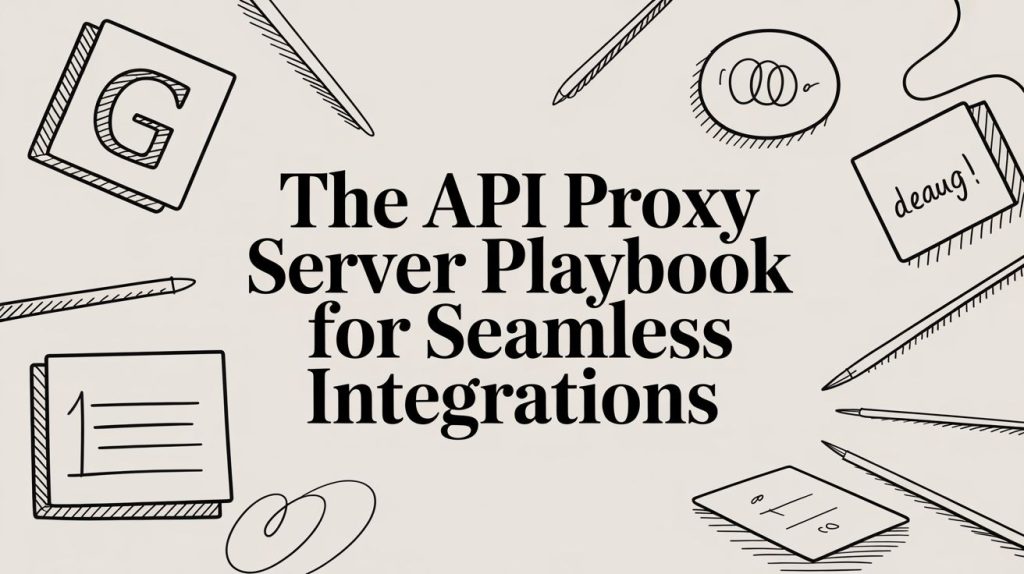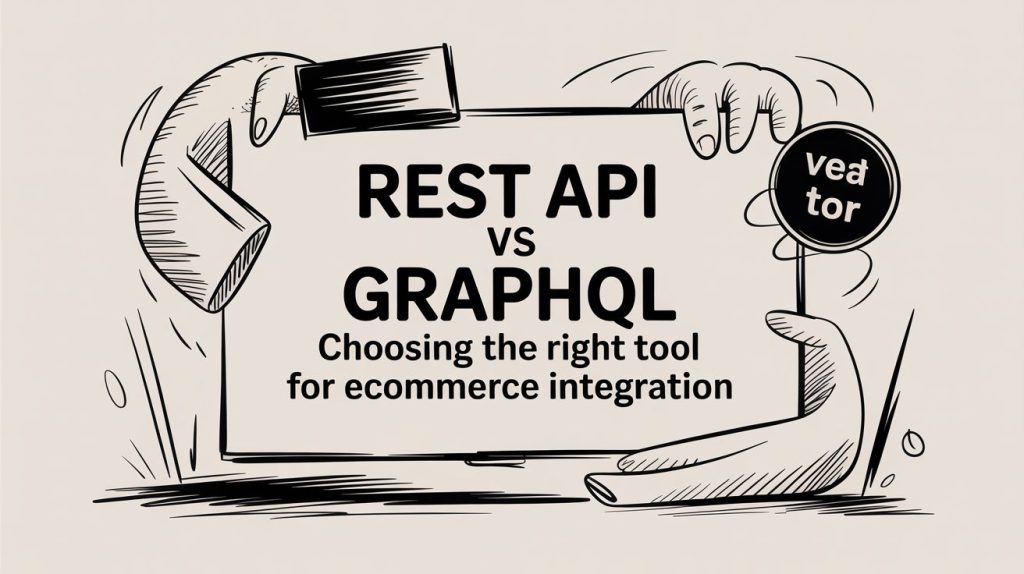
When it comes to integrating multiple eCommerce platforms, software vendors often face a critical decision: unified API vs embedded iPaaS—which approach offers better scalability, control, and efficiency? The ability to seamlessly connect with platforms like Shopify, Magento, WooCommerce, and Amazon is essential for software providers in order management, shipping, PIM, and multi-channel retail. However, each platform has its own API, data structure, and update cycles, making integrations complex and time-consuming.
Managing multiple integrations in-house often means higher development costs, ongoing maintenance, and constant updates to keep up with API changes. On the other hand, relying on a third-party middleware solution might limit customization and introduce additional costs. The challenge is finding a flexible, scalable, and cost-effective solution that supports your software's long-term growth.
This article explores the unified API vs embedded iPaaS debate in detail to help you decide which approach best aligns with your eCommerce software’s needs.
What Is eCommerce Unified API?
eCommerce unified API is a single API that connects to multiple eCommerce platforms, offering a standardized way to access essential store data like orders, products, customers, and shipments. Instead of building separate integrations for each platform, software vendors integrate once with the unified API, significantly reducing development time and maintenance efforts.
A unified API simplifies eCommerce integration by:
Eliminating the need for multiple custom-built integrations.
Providing a consistent data structure across different platforms.
Reducing maintenance efforts by handling API updates on the backend.
Allowing easy scalability as new platforms are added to the unified API.
What Is Embedded iPaaS?
Embedded iPaaS (Integration Platform as a Service) is a cloud-based middleware that provides pre-built connectors to various eCommerce platforms. Instead of coding integrations manually, software vendors use embedded iPaaS to automate data synchronization between their systems and third-party platforms.
This approach is often marketed as a low-code or no-code solution, making it attractive for companies that don't have dedicated development teams. However, since embedded iPaaS acts as an intermediary, it can introduce limitations in customization, flexibility, and real-time data processing.
Key Differences in Unified API vs Embedded iPaaS
Feature | Unified API | Embedded iPaaS |
Integration Approach | Direct connection to multiple platforms via a single API | Uses middleware with pre-built connectors |
Customization & Control | High – developers control integration logic | Limited – dependent on iPaaS provider's features |
Maintenance | API provider handles updates | iPaaS provider manages connectors, but flexibility is restricted |
Performance | Faster, as data flows directly | Can introduce latency due to middleware processing |
Scalability | Easily scales with business needs | May require additional workflows and configurations |
Cost | Predictable pricing based on API calls | Often usage-based, with extra costs for automation workflows |
While both solutions offer integration capabilities, a unified API provides greater flexibility, speed, and control over how data is handled, making it a more scalable solution for growing eCommerce software.
Why Unified API Is the Best Choice for eCommerce Software
For most eCommerce software vendors, a unified API provides more long-term benefits compared to embedded iPaaS. Here's why:
1. More Control Over Integration and Data Processing
With a unified API, developers have direct access to raw data from eCommerce platforms, allowing them to customize how information is processed and synchronized. This is critical for solutions that require real-time order processing, advanced analytics, or custom workflows.
2. Better Performance and Reliability
Since unified API connections do not rely on third-party middleware, they provide faster data retrieval and lower latency. In contrast, embedded iPaaS solutions introduce an additional processing layer, which can lead to delays in data synchronization—a major drawback for businesses that require real-time updates.
3. Lower Long-Term Costs
Although embedded iPaaS might seem cost-effective initially, it often operates on a pay-per-use model, meaning vendors pay for every transaction, data sync, or automation workflow. Over time, this can become more expensive than a unified API, where pricing is based on API requests, offering a more predictable cost structure.
4. Easier Scalability for Expanding eCommerce Software
As eCommerce software companies grow, they often need to expand integrations to support more platforms. With a unified API, this process is simple—new platforms are added without requiring major changes to existing integration logic. In contrast, embedded iPaaS may require adjustments to workflows and might not always support every required platform.
5. Faster Development and Deployment
A unified API allows eCommerce software vendors to launch integrations faster by eliminating the need to develop and maintain multiple separate API connections. This helps companies reduce time-to-market for new features and functionalities.
When Embedded iPaaS Might Be a Suitable Option
While a unified API is the better choice for most eCommerce software vendors, embedded iPaaS might be suitable in the following cases:
For companies that require only basic integrations with a few platforms.
For businesses without in-house developers who need a no-code or low-code solution.
For software that does not require real-time data processing and can tolerate slight delays.
If customization, scalability, and real-time performance are not a priority, then embedded iPaaS could be a simpler short-term solution. However, for long-term growth and cost-efficiency, a unified API remains the better choice.
API2Cart - eCommerce Unified API Integration Solution
API2Cart provides a powerful unified API that allows eCommerce software vendors to seamlessly integrate with 60+ eCommerce platforms and marketplaces through a single integration. With API2Cart, you can:
Access store data in real-time, including orders, products, customers, and inventory.
Eliminate the need for multiple platform-specific integrations.
Reduce development time and maintenance costs.
Scale easily as your software grows.
By choosing API2Cart's unified API, eCommerce software vendors gain a reliable, high-performance solution that simplifies integrations and maximizes efficiency.
How API2Cart's Unified API Works
API2Cart’s unified API serves as a middleware engine that connects your software or app to multiple eCommerce platforms through a single interface.
For example, when you send a request such as order.list, API2Cart receives this standardized command and intelligently maps it to the corresponding native API methods of each connected platform—like Shopify, WooCommerce, or Magento’. Once the native requests are executed, API2Cart gathers the raw responses from all platforms and transforms them into a unified format that your system can instantly understand and process.
Here is an example of the response structure of order.list method for Shopify:
{
"return_code": 0,
"return_message": "string",
"pagination": {
"previous": "string",
"next": "string",
"additional_fields": {},
"custom_fields": {}
},
"result": {
"orders_count": 0,
"order": [
{
"id": "string",
"order_id": "string",
"basket_id": "string",
"channel_id": "string",
"customer": {
"id": "string",
"email": "string",
"first_name": "string",
"last_name": "string",
"phone": "string",
"additional_fields": {},
"custom_fields": {}
},
"create_at": {
"value": "string",
"format": "string",
"additional_fields": {},
"custom_fields": {}
},
"currency": {
"id": "string",
"name": "string",
"iso3": "string",
"symbol_left": "string",
"symbol_right": "string",
"rate": 0,
"avail": true,
"default": true,
"additional_fields": {},
"custom_fields": {}
},
"shipping_address": {
"id": "string",
"type": "string",
"first_name": "string",
"last_name": "string",
"postcode": "string",
"address1": "string",
"address2": "string",
"phone": "string",
"phone_mobile": "string",
"city": "string",
"country": {
"code2": "string",
"code3": "string",
"name": "string",
"additional_fields": {},
"custom_fields": {}
},
"state": {
"code": "string",
"name": "string",
"additional_fields": {},
"custom_fields": {}
},
"company": "string",
"fax": "string",
"website": "string",
"gender": "string",
"region": "string",
"default": true,
"tax_id": "string",
"identification_number": "string",
"alias": "string",
"additional_fields": {},
"custom_fields": {}
},
"billing_address": {
"id": "string",
"type": "string",
"first_name": "string",
"last_name": "string",
"postcode": "string",
"address1": "string",
"address2": "string",
"phone": "string",
"phone_mobile": "string",
"city": "string",
"country": {
"code2": "string",
"code3": "string",
"name": "string",
"additional_fields": {},
"custom_fields": {}
},
"state": {
"code": "string",
"name": "string",
"additional_fields": {},
"custom_fields": {}
},
"company": "string",
"fax": "string",
"website": "string",
"gender": "string",
"region": "string",
"default": true,
"tax_id": "string",
"identification_number": "string",
"alias": "string",
"additional_fields": {},
"custom_fields": {}
},
"payment_method": {
"name": "string",
"additional_fields": {},
"custom_fields": {}
},
"shipping_method": {
"name": "string",
"additional_fields": {},
"custom_fields": {}
},
"shipping_methods": [
{
"name": "string",
"additional_fields": {},
"custom_fields": {}
}
],
"status": {
"id": "string",
"name": "string",
"history": [
{
"id": "string",
"name": "string",
"modified_time": {
"value": "string",
"format": "string",
"additional_fields": {},
"custom_fields": {}
},
"notify": true,
"comment": "string",
"additional_fields": {},
"custom_fields": {}
}
],
"refund_info": {
"shipping": 0,
"fee": 0,
"tax": 0,
"total_refunded": 0,
"time": {
"value": "string",
"format": "string",
"additional_fields": {},
"custom_fields": {}
},
"comment": "string",
"refunded_items": [
{
"product_id": "string",
"variant_id": "string",
"order_product_id": "string",
"qty": 0,
"refund": 0,
"additional_fields": {},
"custom_fields": {}
}
],
"additional_fields": {},
"custom_fields": {}
},
"additional_fields": {},
"custom_fields": {}
},
"totals": {
"total": 0,
"subtotal": 0,
"shipping": 0,
"tax": 0,
"discount": 0,
"additional_fields": {},
"custom_fields": {}
},
"total": {
"subtotal_ex_tax": 0,
"wrapping_ex_tax": 0,
"shipping_ex_tax": 0,
"total_discount": 0,
"total_tax": 0,
"total": 0,
"total_paid": 0,
"additional_fields": {},
"custom_fields": {}
},
"discounts": [
{
"code": "string",
"value": 0,
"type": "string",
"additional_fields": {},
"custom_fields": {}
}
],
"order_products": [
{
"product_id": "string",
"order_product_id": "string",
"model": "string",
"name": "string",
"price": 0,
"price_inc_tax": 0,
"quantity": 0,
"discount_amount": 0,
"total_price": 0,
"tax_percent": 0,
"tax_value": 0,
"tax_value_after_discount": 0,
"options": [
{
"option_id": "string",
"name": "string",
"value": "string",
"price": 0,
"weight": 0,
"type": "string",
"product_option_value_id": "string",
"additional_fields": {},
"custom_fields": {}
}
],
"variant_id": "string",
"weight_unit": "string",
"weight": 0,
"barcode": "string",
"parent_order_product_id": "string",
"additional_fields": {},
"custom_fields": {}
}
],
"bundles": [
{
"product_id": "string",
"order_product_id": "string",
"model": "string",
"name": "string",
"price": 0,
"price_inc_tax": 0,
"quantity": 0,
"discount_amount": 0,
"total_price": 0,
"tax_percent": 0,
"tax_value": 0,
"tax_value_after_discount": 0,
"options": [
{
"option_id": "string",
"name": "string",
"value": "string",
"price": 0,
"weight": 0,
"type": "string",
"product_option_value_id": "string",
"additional_fields": {},
"custom_fields": {}
}
],
"variant_id": "string",
"weight_unit": "string",
"weight": 0,
"barcode": "string",
"parent_order_product_id": "string",
"additional_fields": {},
"custom_fields": {}
}
],
"modified_at": {
"value": "string",
"format": "string",
"additional_fields": {},
"custom_fields": {}
},
"finished_time": {
"value": "string",
"format": "string",
"additional_fields": {},
"custom_fields": {}
},
"comment": "string",
"store_id": "string",
"warehouses_ids": [
"string"
],
"refunds": [
{
"id": "string",
"shipping": 0,
"fee": 0,
"tax": 0,
"total": 0,
"modified_time": {
"value": "string",
"format": "string",
"additional_fields": {},
"custom_fields": {}
},
"comment": "string",
"items": [
{
"product_id": "string",
"variant_id": "string",
"order_product_id": "string",
"qty": 0,
"refund": 0,
"additional_fields": {},
"custom_fields": {}
}
],
"additional_fields": {},
"custom_fields": {}
}
],
"gift_message": "string",
"order_details_url": "string",
"additional_fields": {},
"custom_fields": {}
}
],
"additional_fields": {},
"custom_fields": {}
},
"additional_fields": {},
"custom_fields": {}
}
This eliminates the need to build and maintain separate integrations for each platform, reduces development overhead, and ensures compatibility even when individual platform APIs change. By handling both the translation of requests and responses in real time, API2Cart enables seamless data exchange for orders, products, customers, and more—making it the most efficient and scalable solution for eCommerce software providers.
Conclusion
The debate between unified API vs embedded iPaaS comes down to control, scalability, and long-term cost-effectiveness. While embedded iPaaS provides a simplified approach, it often lacks customization, real-time performance, and cost predictability.
For eCommerce software vendors looking for a long-term integration strategy, a unified API is the superior choice. It offers better performance, greater flexibility, and lower long-term costs, making it the ideal solution for software providers handling order management, shipping, inventory, and multi-channel sales.
If you're looking for a robust and scalable integration solution, explore API2Cart's unified API and start a free 14-day trial today.
FAQs
1. API2Cart – provides a unified API that allows to connect software with 60+ eCommerce platforms and marketplaces, such as Shopify, Magento, WooCommerce, Etsy, Wix, OpenCart, Shopee, and others, at once - all though a single integration. Ideal for SaaS applications in shipping, inventory, or ERP fields;
2. Merge – offers unified APIs for HR, accounting, ticketing, and CRM systems, simplifying B2B integrations;
3. Nylas – focuses on email, calendar, and contacts integration through one universal API;
4. Finch – provides a unified API for payroll and employment systems;
5. Kloudless – delivers universal APIs for file storage, CRM, and calendar integrations.
These platforms help software developers to save time, minimize maintenance and ease connectivity between multi-systems by a single API interface.



